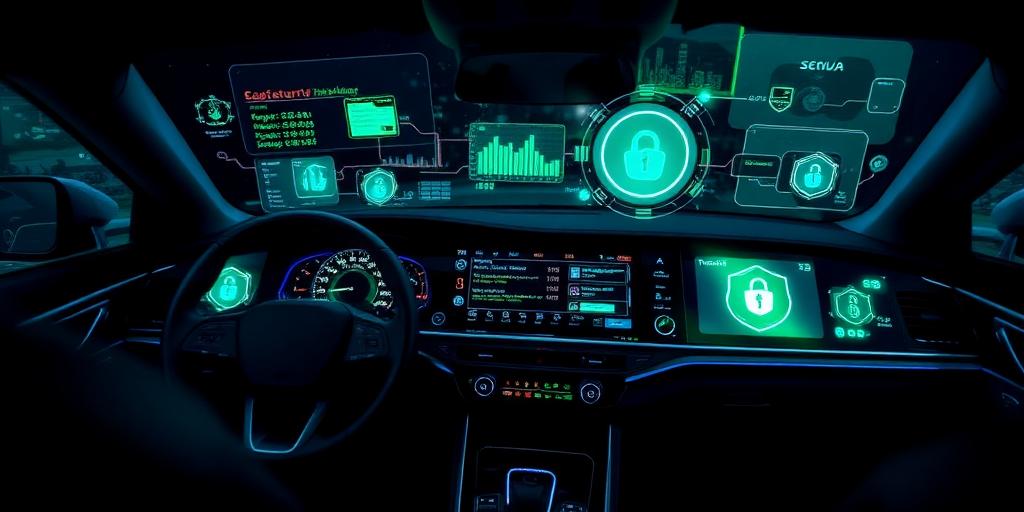The automotive industry stands at the precipice of a profound transformation, driven by connectivity, automation, and electrification. While these advancements promise unparalleled convenience and efficiency, they simultaneously introduce a complex web of cybersecurity vulnerabilities. The future of automotive cybersecurity is not merely about protecting data; it's about safeguarding human lives, national infrastructure, and the integrity of a rapidly evolving ecosystem.
The Expanding Attack Surface of Connected Vehicles
Modern vehicles are sophisticated computing platforms, integrating hundreds of Electronic Control Units (ECUs) and a myriad of sensors. The proliferation of features like over-the-air (OTA) updates, Vehicle-to-Everything (V2X) communication, infotainment systems, and autonomous driving capabilities has dramatically expanded the potential attack surface. This connectivity, while enhancing user experience and operational efficiency, also creates new entry points for malicious actors. Safeguarding connected vehicles requires a comprehensive and adaptive strategy.
Emerging Cyber Threats in the Automotive Realm
As automotive technology advances, so too do the methods employed by cybercriminals. The threats are no longer confined to mere data breaches; they encompass critical safety and operational risks. Key emerging threats include:
- Remote Exploits: Vulnerabilities in connected systems (e.g., infotainment, telematics units) can allow remote access and control over vehicle functions.
- Supply Chain Attacks: Compromising software or hardware components during manufacturing can embed backdoors or malicious code before the vehicle even reaches the consumer.
- Data Privacy Violations: Vehicles collect vast amounts of personal and operational data, making them prime targets for privacy breaches.
- Autonomous System Manipulation: Attacks targeting AI and machine learning algorithms can lead to misinterpretations of surroundings, potentially causing accidents or system failures.
- Charging Infrastructure Vulnerabilities: As electric vehicles become prevalent, the charging infrastructure itself presents a new target for cyberattacks.
Addressing these threats necessitates a proactive approach to automotive industry cyber threats.
Pillars of Robust Automotive Cybersecurity
Effective automotive cybersecurity is not an afterthought; it must be ingrained throughout the vehicle's lifecycle, from design to decommissioning. This requires a multi-faceted strategy built upon several critical pillars:
- Security by Design: Integrating security considerations from the initial design phase of hardware and software components. This involves threat modeling, risk assessments, and the implementation of secure coding practices.
- In-Vehicle Network Security: Implementing robust segmentation, intrusion detection systems (IDS), and secure communication protocols within the vehicle's internal network (e.g., CAN, Ethernet).
- Secure Over-The-Air (OTA) Updates: Ensuring the integrity and authenticity of software updates delivered remotely to prevent malicious code injection.
- Threat Intelligence and Monitoring: Continuous monitoring of vehicle fleets for anomalous behavior and leveraging real-time threat intelligence to anticipate and respond to emerging vulnerabilities.
- Post-Quantum Cryptography (PQC): Preparing for the advent of quantum computing, which could potentially break current cryptographic standards, by exploring and implementing quantum-resistant encryption.
- Cybersecurity Regulations and Standards Compliance: Adhering to international standards such as UNECE WP.29 and ISO/SAE 21434 (Road vehicles – Cybersecurity engineering), which mandate cybersecurity management systems for vehicle manufacturers.
These measures are crucial for car hacking prevention and ensuring the long-term security of automotive systems.
The Road Ahead: Continuous Innovation and Collaboration
The future of automotive cybersecurity will be characterized by continuous innovation and unparalleled collaboration across the industry. Governments, automakers, Tier 1 suppliers, and cybersecurity firms must work in concert to develop common standards, share threat intelligence, and foster a culture of security. As vehicle autonomy and connectivity advance, the integration of Artificial Intelligence (AI) and Machine Learning (ML) in security operations will become paramount for detecting sophisticated attacks in real-time. Furthermore, the development of secure hardware modules and tamper-proof systems will add critical layers of defense.
In conclusion, the journey towards fully secure connected and autonomous vehicles is complex and ongoing. The automotive industry must embrace cybersecurity not as a regulatory burden, but as a fundamental differentiator and a cornerstone of trust. Proactive investment, rigorous implementation of security protocols, and unwavering commitment to safeguarding vehicle systems are essential to unlock the full potential of the mobility revolution.









